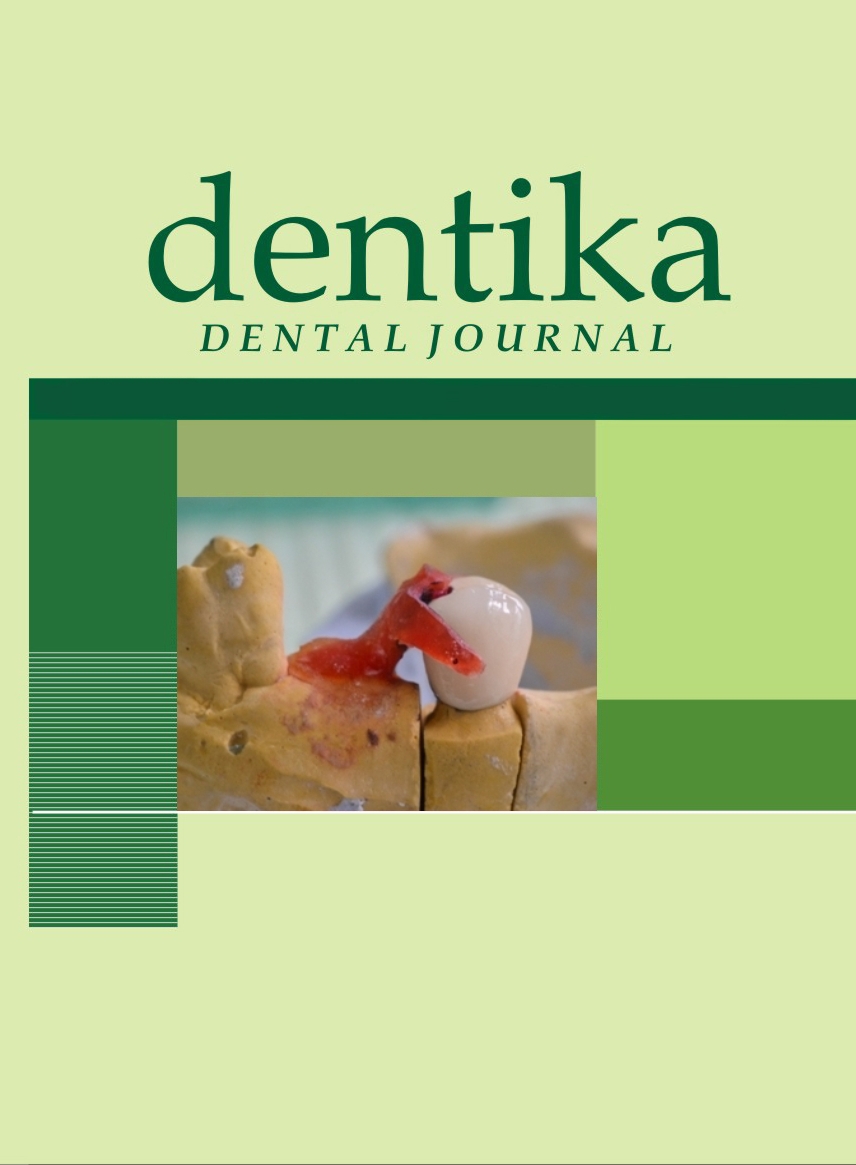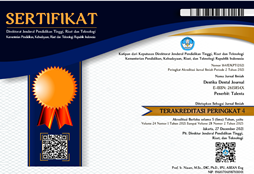The Anti-Bacterial Potency of Tamarind (Tamarindus Indica L.) Seed Coat Extract Against the Growth of Staphylococcus aureus ATCC® 29213TM (In Vitro)
DOI:
https://doi.org/10.32734/dentika.v26i1.9411Keywords:
tamarind seed coat, Staphylococcus aureus ATCC® 29213TM, inhibition zonesAbstract
The prevalence of oral bacterial infections, such periodontitis caused by Staphylococcus aureus is a global issue affecting several countries, including Indonesia. However, the use of Tamarind (Tamarindus indica L.), a multifunctional plant with antibacterial, antidiabetic, anticholesterol, antioxidant, and analgesic effects, has proven to be effective overcome this issue. The antimicrobial compounds of tamarind such as polyphenols, tannins, and anthocyanins, which damage cell walls, inactivate enzymes, and interfere with protein transport, involve bacteria lysis. Therefore, this study aims to determine the antibacterial effect of tamarind seed coat extract against Staphylococcus aureus ATCC® 29213TM. The design of this study is experimental laboratory, with a post-test-only control group design, which was analyzed using ANOVA and Least Significant Difference (LSD) tests. The parameters measured included the zone of inhibition, Minimum Inhibitory Concentration (MIC), and Minimum Bactericidal Concentration (MBC) at various extract concentrations of 15%, 10%, 5%, and 2.5%. The inhibition zone was determined using the blank disk method with a digital caliper, while the MIC and MBC were measured using the dilution method. Tamarind seed coat was extracted using a maceration method with 70% ethanol, divided into four group concentrations. The results showed average inhibition zones of 15 mm, 12.7 mm, 10.6 mm, and 0 mm at concentrations of 15%, 10%, 5%, and 2.5%, respectively. The MIC and MBC obtained through the dilution method in the tube were clearer at 5% and turbid at 15%. Furthermore, the value of both parameters at 5% and 10% were determined by subculturing the solution onto Mueller Hinton Agar (MHA) media. Based on the results, higher concentrations of the extract were more effective against Staphylococcus aureus ATCC® 29213TM.
Downloads

Downloads
Published
How to Cite
Issue
Section
License
Copyright (c) 2023 Dentika: Dental Journal

This work is licensed under a Creative Commons Attribution-ShareAlike 4.0 International License.

















